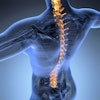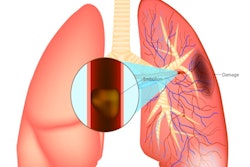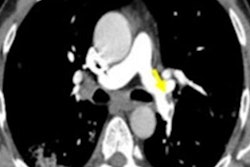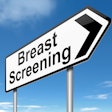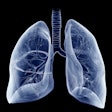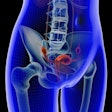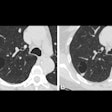
As much as 37% of CT pulmonary angiography (CTPA) exams for patients with a pulmonary embolism (PE) were ordered against guideline recommendations at a New York hospital, according to a new study. Researchers investigated the underlying reason for this discordance in an April 30 article published in the Journal of the American College of Radiology.
In the retrospective study, Dr. Soterios Gyftopoulos and colleagues from New York University (NYU) School of Medicine examined the cases of 208 patients suspected of having PE who underwent an emergency CTPA exam between January 6, 2016, and February 25, 2016, at an academic medical center. The average age of the cohort was 58 years, and 65% were women. Only 8.5% of the CTPA scans turned out to be positive for PE.
The researchers determined whether patients should have undergone CTPA exams based on three different clinical prediction rules for PE: the revised Geneva score, a modified version of the Wells criteria that automatically assumed PE was a likely diagnosis, and a version of the Wells criteria that did not automatically assume PE.
Overall, the proportion of exams ordered in opposition to guideline recommendations ranged from 25% to 37.3%, depending on the type of criteria used. In addition, 46 (21.7%) of the CTPA exams were not warranted based on any of the three major guidelines; nearly 9% of these unwarranted exams were deemed entirely unnecessary because they were performed in patients who were unlikely to have PE and who had a normal score on a D-dimer blood test.
| Appropriateness of CT pulmonary angiography for pulmonary embolism | |||
| Wells criteria ("automatic") | Wells criteria ("nonautomatic") | Geneva score | |
| Exams ordered against guideline recommendations | 25% | 37.3% | 34.4% |
Why were emergency medicine providers ordering CTPA for patients when multiple society guidelines recommended against them?
A likely explanation for this phenomenon is that many of these providers prefer to rely on their own clinical judgment -- which they called "gestalt" -- instead of decision-support tools, the authors noted. In prior studies, some providers have found that gestalt offered a more accurate risk assessment and allowed them to identify risk factors left out of most society guidelines.
Among all of the CTPA exams that the guidelines indicated were potentially avoidable, roughly 43% were characterized by at least one risk factor not included in the guidelines, including conditions such as pregnancy or chronic kidney disease that are known to increase an individual's likelihood of developing PE. The presence of such risk factors may have convinced the providers to overrule guidance and order CTPA exams for their patients, regardless of their low PE risk stratification scores, according to Gyftopoulos and colleagues.
"A more effective decision tool to reduce CTPA testing might calculate the patient's risk and then query the provider for agreement with risk level before providing a recommendation," they wrote. "By focusing interventions more on the difficulties involved in these decisions rather than further simplification of an inherently complex issue, it is possible that we will see an improvement in outcomes."
